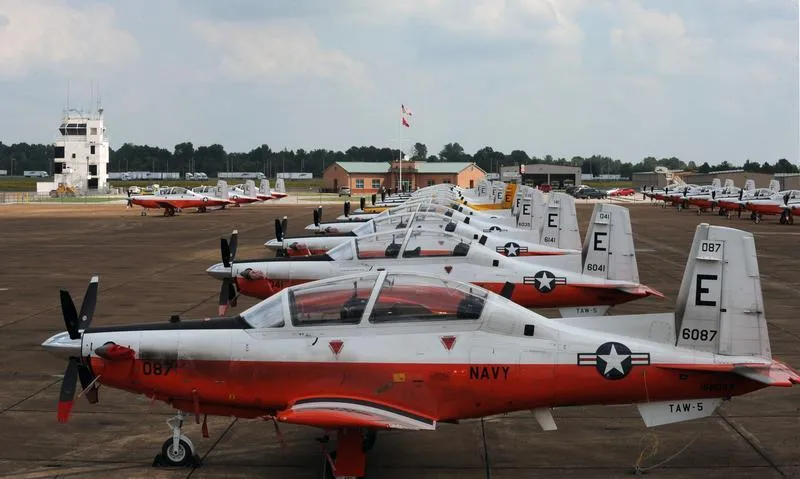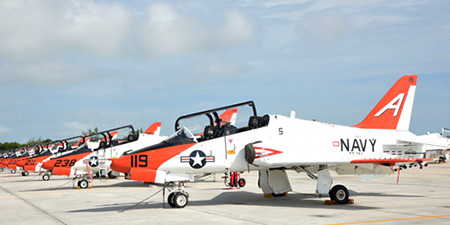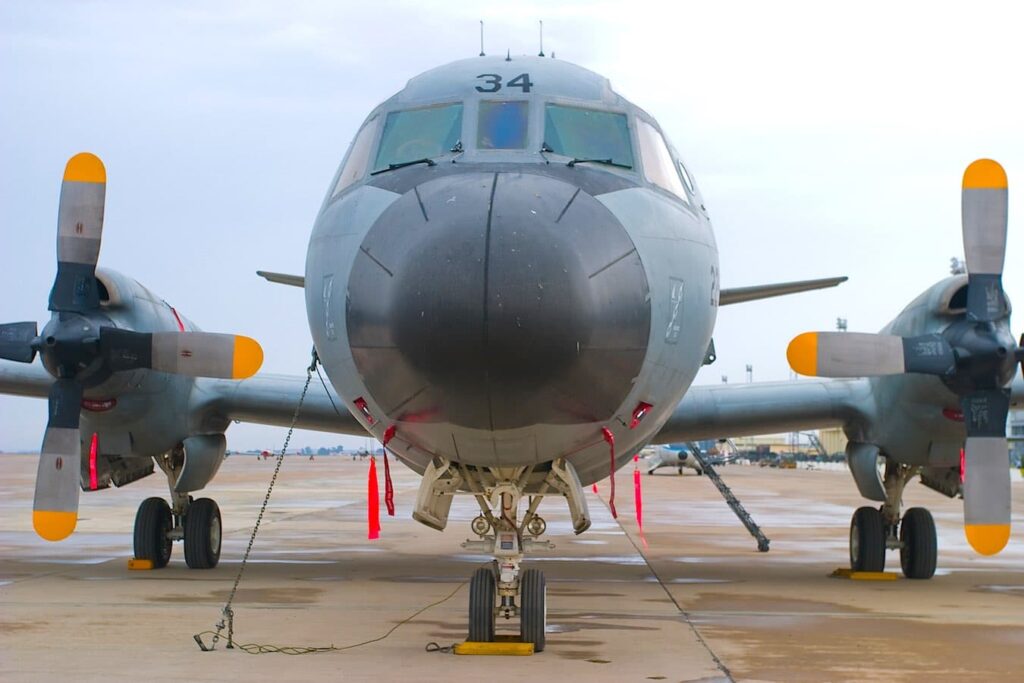
Have you ever wondered how long it takes to complete Navy flight school? Well, you’re about to find out! In this article, we’ll delve into the details of Navy flight school and explore the duration of the program. Whether you’re considering a career in aviation or simply curious about the training process, this article will provide you with the information you need.
Navy flight school is an intensive program that prepares aspiring pilots for the demands of military aviation. The duration of the program can vary depending on the type of aircraft you’re training to fly. On average, it takes around 18 to 24 months to complete Navy flight school. During this time, you will undergo rigorous training that includes classroom instruction, simulator sessions, and actual flight time.
The length of the program is necessary to ensure that you develop the necessary skills and knowledge to become a proficient pilot. This extensive training involves learning the principles of aerodynamics, navigation, communication procedures, and advanced flight maneuvers. Additionally, you will also receive training in emergency procedures and combat tactics. By the time you complete Navy flight school, you will be well-prepared to handle the challenges of flying military aircraft.
In conclusion, Navy flight school is a demanding and comprehensive program. The duration of the program is approximately 18 to 24 months, during which you will undergo intense training to become a skilled pilot. If you’re considering a career in aviation, Navy flight school provides an excellent opportunity to acquire the necessary skills and knowledge for military aviation.

Overview of Navy Flight School
Navy Flight School is a comprehensive program designed to train future naval aviators to become proficient in flight operations. The program is known for its rigorous training curriculum, physical fitness requirements, and academic standards. This article provides an overview of the duration, curriculum, and key aspects of Navy Flight School.
Basic Flight Training
The first phase of Navy Flight School is Basic Flight Training. This phase focuses on providing aspiring aviators with a solid foundation in aviation fundamentals. The duration of Basic Flight Training can vary, but it generally lasts around six months to a year. During this phase, students undergo intensive classroom instruction, simulator training, and actual flight time.
The curriculum of Basic Flight Training covers a wide range of topics such as aircraft systems, aerodynamics, navigation, and emergency procedures. Students also learn basic flight maneuvers and develop essential skills needed for safe and effective flying. The coursework is designed to build a strong knowledge base and hone the students’ abilities to handle various flight scenarios.
Flying hours per week in Basic Flight Training can vary depending on the stage of training and the availability of aircraft. On average, students can expect to spend around 10 to 15 hours in the air each week. These flight hours allow students to practice and apply the concepts they learn in the classroom and simulator.

Intermediate Flight Training
After successfully completing Basic Flight Training, students progress to the next phase known as Intermediate Flight Training. This phase focuses on refining the skills acquired in Basic Flight Training and preparing students for more complex flight operations. The duration of Intermediate Flight Training can range from six to twelve months.
The curriculum of Intermediate Flight Training includes advanced flight maneuvers, instrument flying, formation flying, and advanced navigation techniques. Students also receive specialized training in areas such as aerial combat, reconnaissance, or transport operations, depending on their chosen career path.
During Intermediate Flight Training, students are exposed to a more challenging flying environment. They practice flying in adverse weather conditions, conduct night operations, and simulate emergency scenarios. The goal is to prepare students to safely and effectively handle any situation they may encounter in future operations.
Advanced Flight Training
The final phase of Navy Flight School is Advanced Flight Training. This phase focuses on providing students with specialized training on specific aircraft types. The duration of Advanced Flight Training can vary depending on the aircraft type and the complexity of the training program.
The curriculum of Advanced Flight Training is tailored to the specific aircraft students will be operating. They receive in-depth instruction on the aircraft’s systems, operations, and mission-specific tasks. This phase is designed to ensure that students develop the necessary proficiency to operate their assigned aircraft with maximum efficiency and safety.
Throughout Advanced Flight Training, students undergo extensive flight hours to further refine their skills. They engage in simulated combat scenarios, conduct tactical missions, and practice advanced flight maneuvers. The emphasis is on building confidence and proficiency in the specific aircraft they will be flying in their future naval career.

Physical Fitness Requirements
Navy Flight School requires a high level of physical fitness to ensure that students can meet the demanding requirements of aviation operations. The physical training program is structured to enhance strength, endurance, and overall fitness. Students are subjected to regular physical training sessions, which include cardio exercises, strength training, and flexibility exercises.
In addition to the physical training program, students must meet specific health and fitness standards to be eligible for Navy Flight School. These standards address factors such as vision, hearing, cardiovascular health, and overall physical well-being. Medical examinations and tests are conducted to ensure that students meet these standards and are physically capable of handling the demands of flying.
Academic Requirements
Navy Flight School also places a high emphasis on academic excellence. Students are required to meet educational prerequisites to be eligible for the program. These prerequisites typically include a high school diploma or equivalent, as well as a solid foundation in mathematics, physics, and English.
Once accepted into the program, students must successfully complete a series of academic courses and exams to progress through the different phases of flight training. These courses cover subjects such as aviation theory, aviation regulations, meteorology, and aviation safety. The exams assess the students’ understanding of the material and their ability to apply it to real-world scenarios.

Training Locations
Navy Flight School operates at several training bases across the country. The primary training bases for flight operations include Pensacola Naval Air Station in Florida and Naval Air Station Whiting Field in Milton, Florida. These bases provide the necessary infrastructure, resources, and facilities to support flight training operations.
In addition to the primary training bases, there are also secondary training sites where students may undergo specialized training or additional flight hours. These sites include different naval air stations and military installations that offer unique training opportunities, such as carrier-based operations or specific mission-specific training.
Instructors and Staff
Navy Flight School is staffed by a highly skilled team of flight instructors and support personnel. The flight instructors are experienced naval aviators who have gone through the same training program and have extensive knowledge and expertise in aviation operations. They are responsible for delivering classroom instruction, conducting simulator training, and assessing student performance during flight operations.
Support personnel play a crucial role in ensuring the smooth functioning of Navy Flight School. They are responsible for maintaining aircraft, scheduling flights, managing training resources, and providing logistical support. Their efforts contribute to creating a conducive learning environment and ensuring that training operations are conducted efficiently.

Evaluation and Grading
Throughout Navy Flight School, students are continuously evaluated to assess their progress and performance. Performance assessments are conducted regularly to gauge the students’ proficiency in flight operations. These assessments include in-flight evaluations, simulator tests, written exams, and oral exams.
The grading criteria for Navy Flight School are rigorous and closely aligned with the standards of excellence expected in naval aviation. Students are graded based on their ability to demonstrate competency in various areas such as aircraft knowledge, flight maneuvers, decision-making skills, and overall professionalism. These grades play a significant role in determining the students’ progression through the program.
Safety and Emergency Procedures
Safety is paramount in Navy Flight School, and students are exposed to comprehensive safety protocols from the beginning of their training. They undergo training on emergency procedures, including simulated emergency scenarios, to ensure that they are well-prepared to handle unexpected situations. Safety briefings and debriefings are conducted before and after each flight to reinforce safety practices and identify areas for improvement.
Emergency simulations are a critical component of Navy Flight School. These simulations involve recreating emergency situations to test the students’ ability to respond effectively while under pressure. These simulations help build the students’ confidence and ensure that they can handle emergency situations safely and efficiently during actual flight operations.
Advanced Training Options
Once students have completed Navy Flight School, they can pursue specialized tracks or additional certifications to further enhance their skills and career prospects. These options include advanced qualifications in areas such as carrier-based operations, reconnaissance, helicopter operations, or test pilot training. These advanced training options provide additional expertise and open up opportunities for specialized roles within the Navy.
Career Paths after Flight School
Upon successful completion of Navy Flight School, graduates have several career paths available to them. They can go on to become naval aviators and fly a range of aircraft in various roles, such as fighter pilots, transport pilots, or helicopter pilots. The Navy offers numerous opportunities for career progression and specialization, allowing aviators to continually enhance their skills and take on leadership roles.
Promotion opportunities within the aviation community are available based on performance, experience, and leadership abilities. Naval aviators can advance through various ranks and assume command positions, leading flight operations and mentoring future aviators.
Costs and Financial Assistance
Attending Navy Flight School comes with costs, primarily in the form of tuition fees. The exact cost can vary depending on the program and any additional certifications pursued. It is important to note that Navy Flight School tuition fees are subject to change, so it is advised to consult the latest information from official sources.
Fortunately, there are several financial assistance programs available to help alleviate the burden of tuition fees. The Navy offers scholarship and loan programs that can provide financial support to eligible students. These programs aim to ensure that deserving individuals have access to quality education and can pursue their dreams of becoming naval aviators.
Conclusion
Navy Flight School is a challenging yet rewarding program that equips aspiring naval aviators with the necessary skills and knowledge to excel in flight operations. The duration of Navy Flight School can vary for each phase, lasting anywhere from six months to several years. From basic flight training to specialized aircraft training, students undergo comprehensive training in various aspects of aviation. It is a rigorous program that requires physical fitness, academic excellence, and a strong commitment to excellence. Upon completion of Navy Flight School, graduates have a wealth of career opportunities within the Navy, where they can continue to grow and make significant contributions to the defense of their country.

